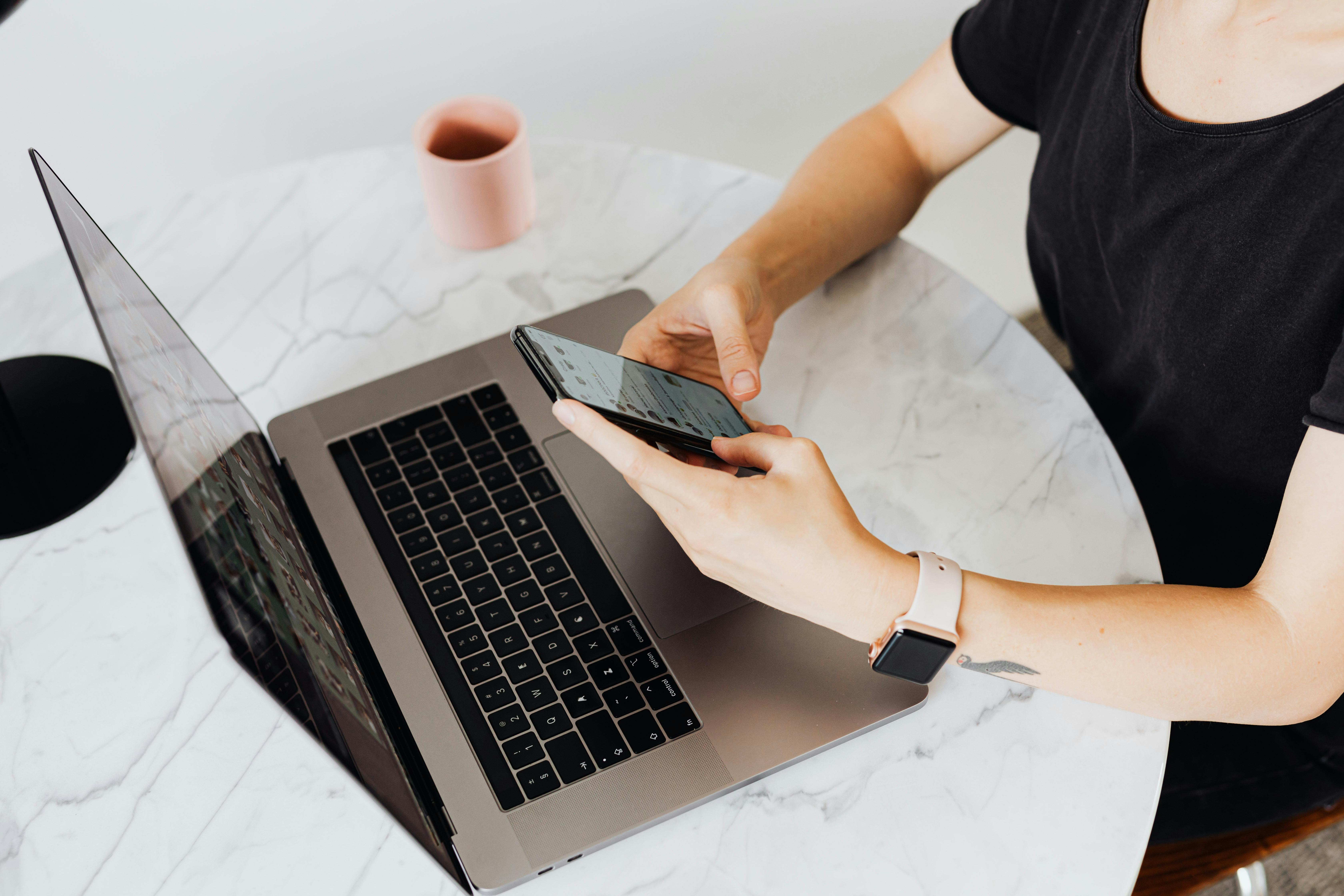Cold Email
How to Politely Follow Up on an Email Without Being Pushy
Struggling with email follow-ups? This guide shows how to follow up politely, maintain professionalism, and boost response rates with clear strategies.
Feb 18, 2025

You send an email, wait patiently, and… nothing. It’s easy to feel stuck, wondering if your message got lost or overlooked. Following up can feel awkward, but it doesn’t have to be. With the right approach, you can check in without coming across as pushy or impatient.
Knowing how to follow up politely is a skill that can make all the difference, whether you’re waiting on a job application, a project update, or just a simple response. It’s about striking the perfect balance between being professional and approachable. You want to nudge the conversation forward while leaving a positive impression.
If you’ve ever hesitated to send that follow-up email, don’t worry, you’re not alone. Let’s break down the best ways to follow up gracefully and keep the communication flowing.
Understanding The Importance Of Following Up

Effective follow-ups bridge gaps in communication and ensure your emails don’t get overlooked. Whether you're discussing cold emails, lead generation, or B2B sales, following up demonstrates your commitment to maintaining connections. It's not just about getting an immediate reply; it's about leaving a positive, professional impression that aligns with your goals.
Key Reasons To Follow Up
Improved Visibility
People receive dozens, sometimes hundreds, of emails daily. A polite follow-up ensures your message is visible even if the recipient missed it earlier. For instance, in B2B outreach, decision-makers may overlook your first email due to volume or time constraints.
Building Trust
When you follow up, you signal that you're serious and dependable. Regular but spaced-out communication fosters trust, especially critical in fields like lead generation.
Higher Response Rates
Statistics from marketing research show that follow-ups increase reply rates by over 50%. Sending a tactful reminder motivates recipients who intended to respond but got sidetracked.
Techniques For Polite Follow-Ups
Set Clear Objectives
Define your purpose before following up. Are you seeking clarification, scheduling a call, or addressing pending queries? This clarity helps craft focused, efficient follow-up emails.
Timing Matters
Wait an appropriate amount of time before sending a follow-up. For cold emails, a 3-5 day gap works best. This window ensures you're persistent without being intrusive.
Personalize The Message
Reference your initial email and include specific details about your conversation, offering, or request. For instance, mention a unique value your invitation brings, like leveraging LinkedIn outreach for targeted results.
Keep It Short And Friendly
Use concise language and a professional tone. Start with a warm greeting, restate your purpose, and invite action. Example: "Hi [Name], I wanted to circle back about [subject]. Let me know if you're available to discuss further."
Incorporating Best Practices
Use Automation Sparingly
Email tools allow you to automate follow-ups, but tailor each message to avoid appearing impersonal. This tactic works well when managing broad B2B lead generation campaigns.
Track Metrics
Evaluate open rates, click rates, and replies from your follow-ups. These data points help refine your approach over time, ensuring maximum engagement with minimal effort.
Channel Diversity
If your email follow-ups don’t get responses, consider reaching out via other platforms like LinkedIn. This multi-channel strategy broadens opportunities to reconnect.
End With A Call-To-Action (CTA)
Whether proposing a meeting or requesting information, end with an actionable step. For example, "Would Monday at 10 AM suit you for a quick call?" signals you're eager yet respectful.
Refine your follow-ups based on context and timing. In B2B, effective outreach demands persistence, professionalism, and personalization, especially when engaging with prospective clients or partners.
When To Follow Up On An Email
Following up on an email requires careful timing to maintain professionalism and avoid coming across as impatient. Understanding when to follow up ensures your message stays relevant and well-received in business contexts like B2B sales, lead generation, or cold outreach. Here’s how you can determine the right moments to send a follow-up.
Determining The Appropriate Timeline
The timing of your follow-up depends on the type of email and its purpose. For cold outreach or lead generation, wait at least 2-3 business days. This allows the recipient sufficient time to review your message without feeling rushed. If you're following up on a job application, a 7-10 day period shows patience while maintaining interest. For urgent matters, such as project updates, a follow-up within 24-48 hours might be suitable. Tailor your timing based on the recipient's industry pace; for example, tech sectors often require quicker responses compared to traditional industries.
To track follow-up timelines, use tools like CRM systems or email tracking platforms. Many services, like Growleady, offer advanced tools to streamline cold outreach and automate follow-up schedules in a way that feels personalized yet professional. By leveraging these resources, you can stay organized and improve your follow-up precision.
Recognizing Signs That A Follow-Up Is Necessary
Consider a follow-up whenever you're seeking to re-establish communication or confirm interest. Signs include no response after an appropriate period, incomplete information, or a lack of acknowledgment of a critical update. For example, in B2B sales, if a prospect hasn’t replied after your initial outreach, it might indicate that your message was lost among others or didn't resonate enough.
Address the absence of a response politely. Phrase your follow-up in a way that provides additional value or clarification. For instance, include a quick recap of your previous email along with a benefit-focused question, such as, "Would next Tuesday work for a brief call to discuss how we can [specific benefit]?" This approach not only reminds the recipient about your pitch but also emphasizes its relevance.
Maintaining a professional tone helps avoid misunderstandings. Avoid sounding accusatory by replacing phrases like, “You haven’t responded” with neutral alternatives like, “I wanted to ensure my previous email didn’t get overlooked.” This keeps your communication polite, even when persistence is needed.
Crafting A Polite Follow-Up Email

Following up on an email requires precision and thoughtfulness to ensure you maintain professionalism while fostering engagement. Whether you're reaching out for B2B lead generation, a sales inquiry, or any marketing endeavor, a well-crafted follow-up can make a big difference.
Choosing The Right Tone And Language
Tone and language set the foundation for a successful follow-up. Use a tone that's professional yet approachable. Avoid aggressive or overly formal language, as it may create discomfort. Instead, prioritize clarity and positivity. For instance, phrases like "I wanted to follow up on my last email to ensure it reached you" sound polite and unobtrusive.
Match your tone to the context of the previous email. If you're addressing C-suite executives, maintain a formal and concise tone. For startup founders or solo entrepreneurs, introduce a slightly conversational feel.
Avoid redundancy in follow-ups. Refrain from repeating the initial email word-for-word; instead, rephrase key points or include additional value, such as a helpful resource or an updated offering.
Structuring Your Follow-Up Message
A structured follow-up improves readability and ensures your message stays focused. Begin with a polite greeting and reference the prior communication. For example, "I hope this email finds you well. I’m reaching out to follow up on the proposal I shared earlier this week."
Use short paragraphs to separate your points. Highlight your purpose in the second paragraph. Clearly state what you're seeking, whether it's feedback, a decision, or scheduling an appointment. Examples: "I’d love to understand your thoughts on this proposal" or "Would Tuesday at 10 AM work to discuss this further?"
Include a call-to-action (CTA) in the closing. Keep it straightforward but actionable. Examples include: "Please let me know if you’d like additional details" or "You can schedule a meeting directly via this link."
End with a note of gratitude. A phrase like “Thank you for your time and consideration” leaves a lasting positive impression. Ensure your signature includes your full name, contact details, and any necessary links, such as your LinkedIn profile or relevant company website, for easy accessibility.
Common Mistakes To Avoid When Following Up
Following up on an email requires striking the right balance between persistence and politeness. Missteps can negatively impact your results, especially in B2B lead generation, sales outreach, or marketing communications.
Being Too Aggressive Or Impatient
Frequent or overly pushy follow-ups can frustrate the recipient. If you send multiple emails within a short period or demand immediate responses, it can make you seem unprofessional. Allow appropriate time between follow-ups—typically 2-3 business days for cold outreach or up to a week for more complex queries.
Use constructive language in all communications. Replace phrases like "why haven’t you replied?" with polite wording such as, "I’m following up to ensure you received my last email." This tone reinforces respect for their time and encourages the recipient to respond positively.
Overloading With Excessive Information
Long, content-heavy follow-ups can overwhelm and disengage readers. If you cram your email with unnecessary details, you're likely to dilute its core message. Instead, focus on brevity, clarity, and relevance. For example, summarize your points and guide the reader toward the next step.
Include no more than one or two strong-value propositions in each follow-up message. Tailoring the email to the reader’s priorities ensures higher engagement rates.
By avoiding these mistakes and adhering to best practices, like keeping tone respectful and content concise, you enhance the impact of your email outreach strategies.
Examples Of Effective Email Follow-Ups
Polite and professional email follow-ups can reinforce your message, improve response rates, and strengthen business relationships. These examples demonstrate how to effectively follow up in various situations.
Sample Templates For Different Situations
1. Following Up On A Cold Email:
When reaching out to prospective clients, briefly remind them of your previous interaction. Highlight a key benefit or value proposition to re-engage their interest.
Template:
Subject: Quick Follow-Up – [Your Service/Product]
Hi [Recipient's Name],
I hope this email finds you well. I wanted to follow up on my previous message regarding [specific offering]. We’ve assisted teams like [similar clients or industries] in [specific result or achievement], and I’d love to explore how we could replicate that success for you. Let me know if you’d be open to a call to discuss this further. Thanks for your time!
Best,
[Your Name]
2. Job Application Follow-Up:
After submitting an application, express continued interest and subtly inquire about the hiring process timeline to maintain enthusiasm.
Template:
Subject: Follow-Up On [Position Name] Application
Dear [Hiring Manager’s Name],
I hope this email finds you well. I’m writing to follow up on my application for the [position name] role. I’m truly excited about the opportunity to contribute to [company name] and was wondering if there’s an update on the hiring process. I’d be happy to provide any additional information if needed. Thank you for considering my application!
Kind regards,
[Your Name]
3. Following Up After A Sales Call:
Post-call follow-ups ensure the discussion stays fresh in your prospect’s mind and provide a chance to clarify next steps.
Template:
Subject: Great Speaking With You – Next Steps
Hi [Recipient's Name],
It was a pleasure speaking with you earlier regarding [specific topic discussed]. I wanted to share the resources we mentioned and confirm the next steps: [list action points or key deliverables]. Feel free to reach out if you have any more questions. Looking forward to our continued collaboration!
Best regards,
[Your Name]
4. Event or Webinar Follow-Up:
After hosting or attending an event, a personalized follow-up can keep the connection active.
Template:
Subject: Following Up From [Event Name]
Hi [Recipient's Name],
It was great connecting with you during [event name]. I found our discussion on [specific topic] really insightful and wanted to share [relevant resource or offer]. Let me know if you’d like to discuss this further or explore any collaboration opportunities!
Warm regards,
[Your Name]
Techniques To Enhance Your Follow-Ups
Personalize Your Message: Always tailor the content to the recipient's context, using their name, role, or recent activities. For example, referencing a specific pain point or project shows you’ve done your research.
Add Value In Each Follow-Up: Avoid generic reminders by incorporating helpful resources, insights, or solutions they may find relevant.
Keep It Concise: Busy professionals appreciate clarity. Limit your email to around 3-5 sentences that focus on your objective while remaining respectful of their time.
Use A Clear Call-To-Action: Whether it’s scheduling a meeting, providing feedback, or reviewing a document, guide the recipient toward a specific action for better engagement.
Leverage Multiple Channels If Needed: Consider combining email follow-ups with other outreach methods like LinkedIn messages to diversify your approach without being overly persistent.
Conclusion
Mastering the art of polite email follow-ups can significantly improve your communication and help you achieve better results. By focusing on professionalism, timing, and personalization, you ensure your messages stand out without coming across as pushy.
Approach each follow-up with clarity and respect, keeping your tone friendly and messages concise. Remember that persistence, when done thoughtfully, demonstrates your commitment and reliability. With the right strategies, you can turn follow-ups into an opportunity to strengthen connections and drive meaningful responses.
Frequently Asked Questions
What is the ideal timing for a follow-up email?
The ideal timing depends on the context. For cold outreach, wait 2-3 business days; for job applications, allow 7-10 days before following up. Always consider the recipient's workload and avoid appearing impatient.
What should I include in a follow-up email?
Include a polite greeting, a reference to your prior message, a concise purpose, a clear call-to-action, and a note of gratitude. Keep the email short and focused on the recipient’s needs.
Can I use tools to track follow-ups?
Yes, tools like CRM systems can track follow-up schedules and ensure you stay organized. Use them sparingly to avoid losing the personal touch in your emails.
Is it okay to follow up via multiple channels?
Yes, using a multi-channel approach (email, phone, or LinkedIn) can improve engagement. However, ensure your follow-ups are spaced out and maintain professionalism across all channels.
How can I add value to follow-up communications?
Provide new information, insights, or solutions relevant to the recipient’s needs. Avoid redundancy, and focus on one or two strong-value propositions in each follow-up.

